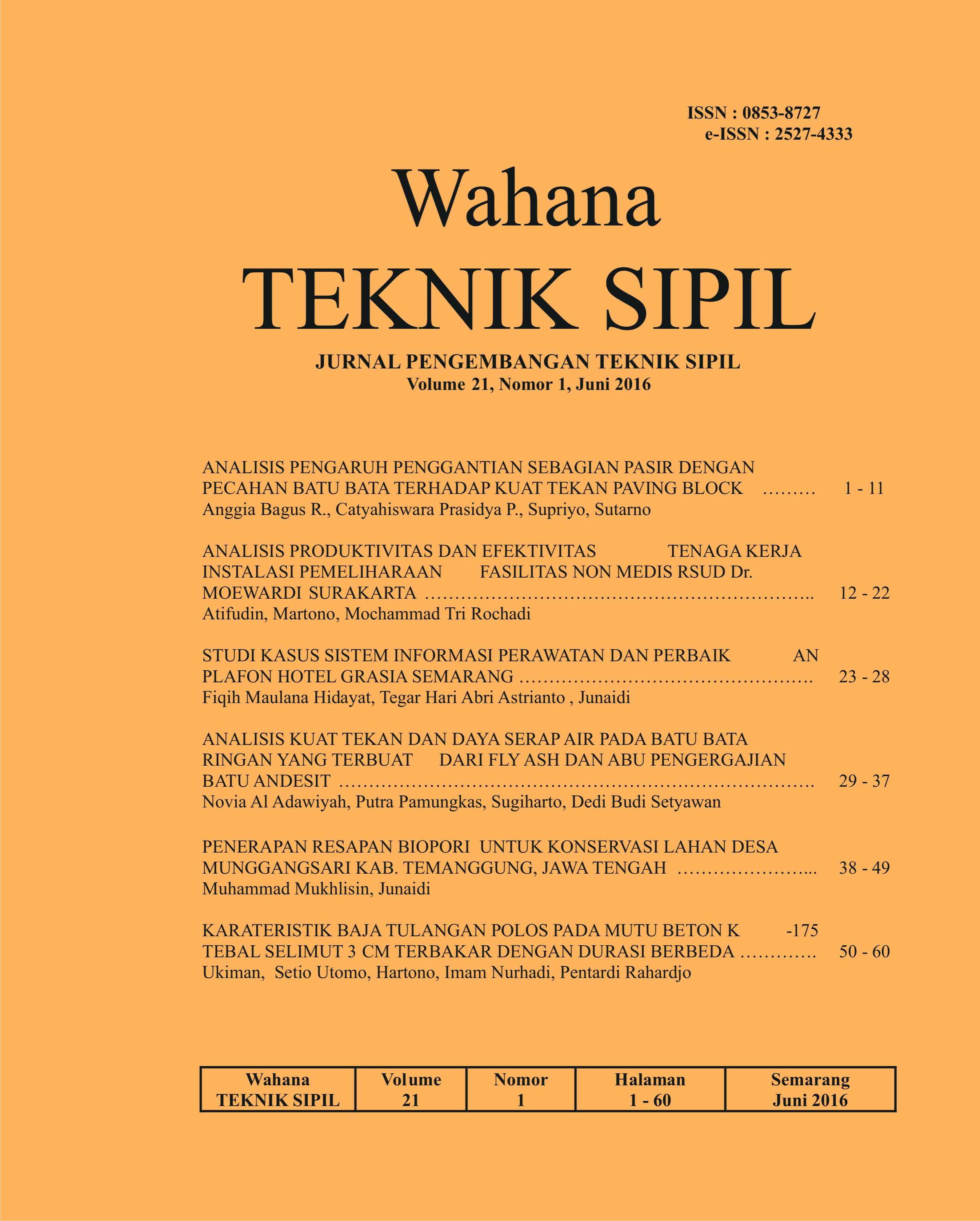Analisis Pengaruh Penggantian Sebagian Pasir Dengan Pecahan Batu Bata Terhadap Kuat Tekan Paving Block
DOI:
https://doi.org/10.32497/wahanats.v21i01.820Keywords:
waste brick, compressive strength, paving blocksAbstract
Penggaron area is one of the places that produce bricks in the city of Semarang. In producing it, then it will generate waste that is the brick itself. On the other hand the use of paving blocks are increasing with growing age. Various innovations have been made in making paving block one broken bricks using waste as a substitute material fine aggregate sand. The purpose of this study is the utilization of waste broken bricks Penggaron as a partial replacement of sand in the manufacture of paving blocks, as well as to determine the optimal compressive strength of paving blocks are made with a mixed composition 1 PC: 6 Ps (control group); 1pc: 5 Ps: 1
Bt; 1pc: 4 Ps: 2 Bt; 1pc: 3 Ps: 3 Bt; 1pc: 2 Ps: 4 Bt; 1pc: 1 Ps: 5 Bt. The test object is made rectangular with a size of 21 cm x 10.5 cm x 6 cm. From the test results 28 days highest compressive strength achieved by paving block with a mixed composition of 1: 6 in the amount of 193.44 kg / cm2. And the lowest compressive strength achieved by the composition of the mixture of 1: 2: 4 that is equal to 102.63 kg / cm2. From the graph has been created, obtained the equation y = -13,78x + 197.12 as well as the correlation coefficient R of 0.5791. The equation shows that the increasing mix of brick lower compressive strength and the R value implies a comparison mix (cement: sand: bricks) have a rather low influence of compressive strength.
Downloads
Published
Issue
Section
License
Authors who publish with this journal agree to the following terms:Authors retain copyright and grant the journal right of first publication with the work simultaneously licensed under a Creative Commons Attribution License that allows others to share the work with an acknowledgement of the work's authorship and initial publication in this journal.
Authors are able to enter into separate, additional contractual arrangements for the non-exclusive distribution of the journal's published version of the work (e.g., post it to an institutional repository or publish it in a book), with an acknowledgement of its initial publication in this journal.
Authors are permitted and encouraged to post their work online (e.g., in institutional repositories or on their website) prior to and during the submission process, as it can lead to productive exchanges, as well as earlier and greater citation of published work (See The Effect of Open Access).






